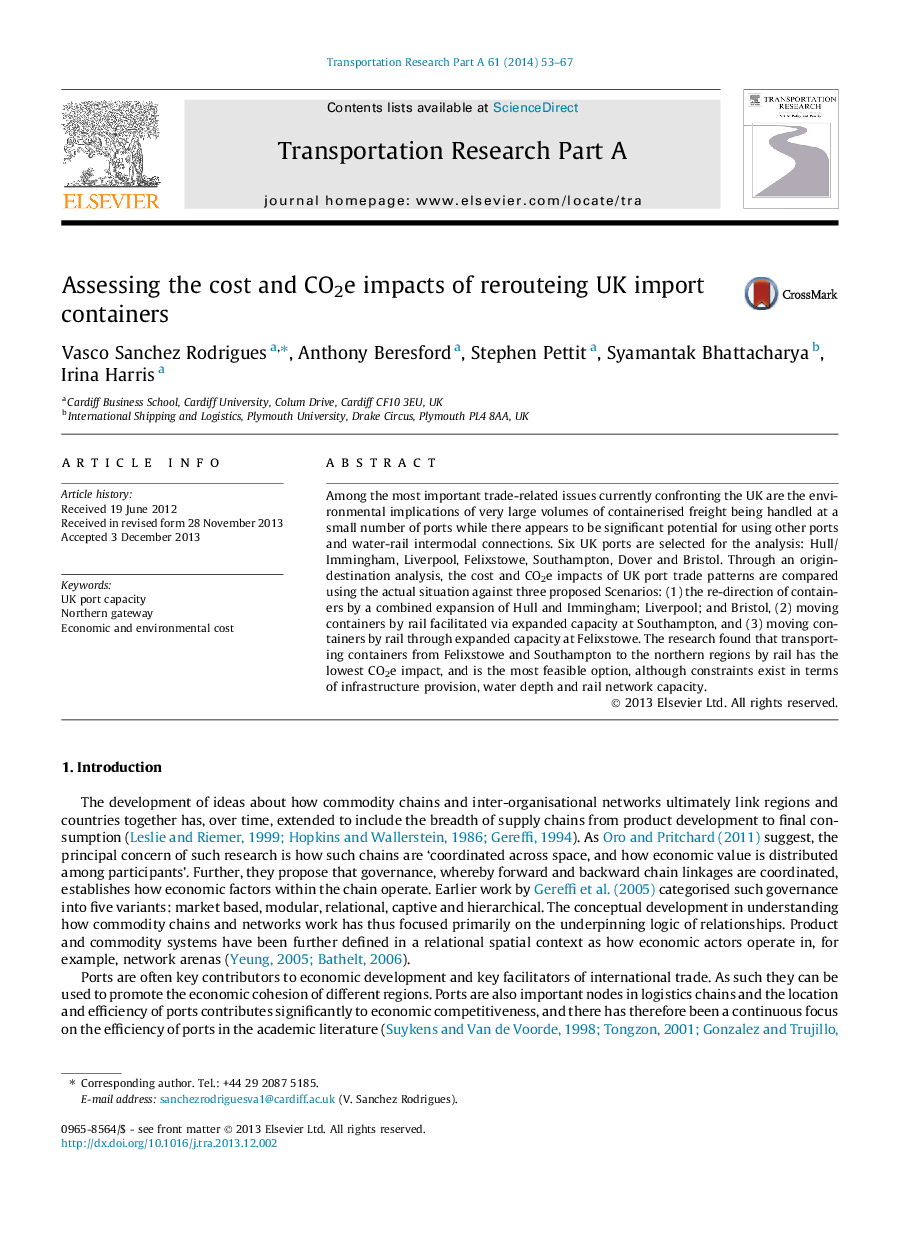| Article ID | Journal | Published Year | Pages | File Type |
|---|---|---|---|---|
| 310736 | Transportation Research Part A: Policy and Practice | 2014 | 15 Pages |
•UK ports: Hull/Immingham, Liverpool, Felixstowe, Southampton, Dover, Bristol.•Origin-destination analysis (cost and CO2e) of UK port trade patterns.•Scenario 1: re-direction of containers by combined expansion of selected ports.•Scenarios 2 and 3: moving containers by rail through expanded capacity at some ports.•Transporting from Felixstowe/Southampton to northern UK by rail has lowest CO2e.
Among the most important trade-related issues currently confronting the UK are the environmental implications of very large volumes of containerised freight being handled at a small number of ports while there appears to be significant potential for using other ports and water-rail intermodal connections. Six UK ports are selected for the analysis: Hull/Immingham, Liverpool, Felixstowe, Southampton, Dover and Bristol. Through an origin-destination analysis, the cost and CO2e impacts of UK port trade patterns are compared using the actual situation against three proposed Scenarios: (1) the re-direction of containers by a combined expansion of Hull and Immingham; Liverpool; and Bristol, (2) moving containers by rail facilitated via expanded capacity at Southampton, and (3) moving containers by rail through expanded capacity at Felixstowe. The research found that transporting containers from Felixstowe and Southampton to the northern regions by rail has the lowest CO2e impact, and is the most feasible option, although constraints exist in terms of infrastructure provision, water depth and rail network capacity.
